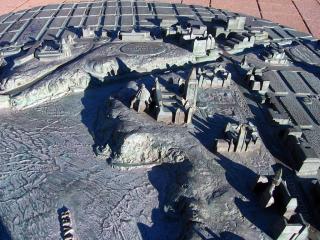One of the most startling distinctions when you look at emissions data from developed and developing states is the relative share of CO2 from fossil fuels and CO2 from land use change and forestry.
In developed countries, 81% of total emissions consist of CO2 produced by the burning of fossil fuels. 19% of emissions are non-CO2 greenhouse gasses, with 11% of that coming from methane and 6% from nitrous oxide. The amount from land use change and forestry barely even registers.
In developing states, by contrast, CO2 from land use change and forestry comprises 33% of total emissions. CO2 from fossil fuels is a more moderate 41%, though it is growing quickly in many countries.
Within the least developed states, land use change and forestry accounts for 62% of total emissions. Largely, this is on account of deforestation. CO2 from fossil fuels produce just 5% of the total.
Part of what this shows is the importance of producing international agreements that take into account the differing emissions profiles of states in different stages of development. Toughening automobile emission standards might make a big difference in Germany, but very little in Chad. By contrast, providing funds to forest rangers in Malaysia or Indonesia might produce big emission reductions.
Source: World Resources Institute. “Navigating the Numbers: Greenhouse Gas Data and International Climate Policy.” 2005.


FAR above the treetops, in Indonesia’s remote Papuan provinces, the spotter planes are circling. They are looking for a place to strip the forest and produce the big cash crop of the moment: palm oil. And if not palm oil then jatropha, cassava or sugar cane, all of which can be used as either food or biofuel. With the price of oil so high these crops have become known as green gold, and they are being sought in some of the last remaining tracts of virgin rainforest in Asia.
Few of the Papuan tribesmen who live in these forests have any idea what the planes up above are doing. Nor do they realise that the future of their land for ten generations could well be determined by the people flying them.
On one side, the Indonesian government wants to become the world’s biggest producer of palm oil and seems ready to sign a number of multi-million hectare concessions—lasting up to 100 years—on Papuan land. The contracts are worth around $8.5 billion. Opposing them are many governments around the world, who worry about the carbon emissions such deforestation would invite. And on another side still is the regional Papuan government, which has its own ideas about what should be done with the land. In the middle of all this are the people who actually live in the forest. Nobody seems quite certain what they want.
The climate is already changing and we need to find urgent ways to mitigate that change immediately and maintain as much biodiversity on the planet as possible. The most positive but realistic thing that governments could agree in Bali is to halt the cutting down of virgin tropical rainforests with immediate effect and agree a method by which the major economies, big multinationals and other carbon offset groups could pay for it. Why is this so important? The next five years of carbon emissions from burning rainforests will alone be greater than all the emissions from air travel since the Wright brothers first flight in 1903 until at least 2025.
Nature Reports Climate Change
Published online: 29 November 2007 | doi:10.1038/climate.2007.69
Seeing the wood for the trees
Olive Heffernan
Whatever shape a post-Kyoto regime takes, be it a bigger and better treaty with greater international compliance and more stringent emissions targets or a radical rethink on climate policy, there are several major drivers of climate change excluded from Kyoto that will be high on the agenda in Bali.
Not least of these is the issue of deforestation, which alone accounts for an estimated 20–25% of global greenhouse gas emissions. Indonesia is the worst offender, chopping at least 1.2–1.4 million hectares annually, both through illegal logging and forest clearance primarily for palm oil plantations. Ironically, many of these plantations have come about as a direct response to the increased global demand for biofuels, which are touted as a clean energy source but in reality can lead to enhanced emissions through land-use change.
Carbon dioxide from fossil fuels has caused only about half of the current anthropogenic greenhouse warming. Thirty-seven percent is attributable to greenhouse gases other than carbon dioxide, and an estimated 15 percent has arisen from land-cover change by humans, primarily deforestation. The relative contribution of fossil-fuel carbon dioxide emissions is increasing, but land-use change and other greenhouse gases still contribute approximately two-fifths of the total carbon dioxide equivalent emissions when they are defined in terms of global warming potential.
Source